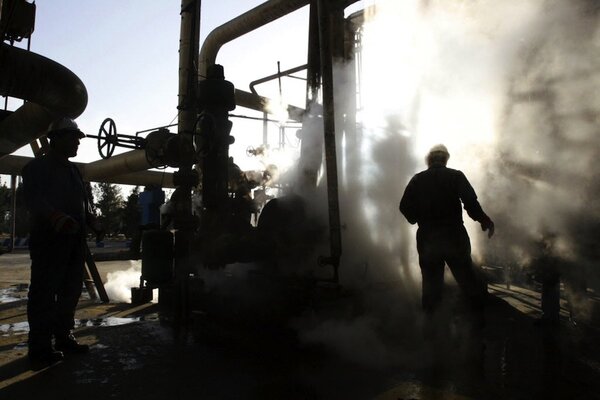How an Iran nuclear deal would impact oil prices
By Nick Cunningham, Oilprice.comJune 27, 2015
A deal stopping Iran’s nuclear program and lifting Western sanctions on the country would immediately push down oil prices, writes Nick Cunningham. The country has 40 million barrels of oil in storage and could ramp up production quickly.
Oil prices have leveled off in recent weeks, but with the
negotiations over Iran’s nuclear program bumping up against a deadline,
that could change.
After crashing last year and then hitting several peaks and valleys, oil prices have traded within a relatively narrow range, with WTI bouncing around a bit above and below the $60 per barrel mark, and Brent staying near $64 per barrel. Of course, day-to-day there has been volatility as usual, but oil prices have been stable (relatively speaking) since the end of April. Even the OPEC meeting came and went without so much as a shrug from the oil markets.
But the deadline for the Iran negotiations – ostensibly set for June 30 – is only a week away and the outcome could have broad ramifications for the oil market, both in the immediate aftermath and over the long-term.
If a deal can be agreed to by both sides, Iran could bring a wave of oil production online. Western sanctions have knocked 1.2 million barrels per day offline since 2012. Although estimates vary, Iran might be able to bring 400,000 barrels per day online within a few months, perhaps as much as 700,000 barrels per day by the end of the year, growing to well over 1 million barrels per day sometime in 2016.
Also, Iran has somewhere around 40 million barrels of oil sitting in storage, a lot of which could essentially hit the market as soon as sanctions are lifted.
If news breaks that a deal is in hand, oil prices will sink on the expectation of this future volume, potentially dropping by $5 to $10 per barrel. And as Iran actually does ramp up output over time, and the rest of OPEC opts against cutting back to make room, global supplies will increase. That will keep a lid on future price gains and extend the current period of soft pricing.
Of course, supply and demand will have to balance out over time, and more Iranian crude will force a larger adjustment from U.S. shale, so U.S. oil production could see a deeper contraction.
After crashing last year and then hitting several peaks and valleys, oil prices have traded within a relatively narrow range, with WTI bouncing around a bit above and below the $60 per barrel mark, and Brent staying near $64 per barrel. Of course, day-to-day there has been volatility as usual, but oil prices have been stable (relatively speaking) since the end of April. Even the OPEC meeting came and went without so much as a shrug from the oil markets.
But the deadline for the Iran negotiations – ostensibly set for June 30 – is only a week away and the outcome could have broad ramifications for the oil market, both in the immediate aftermath and over the long-term.
If a deal can be agreed to by both sides, Iran could bring a wave of oil production online. Western sanctions have knocked 1.2 million barrels per day offline since 2012. Although estimates vary, Iran might be able to bring 400,000 barrels per day online within a few months, perhaps as much as 700,000 barrels per day by the end of the year, growing to well over 1 million barrels per day sometime in 2016.
Also, Iran has somewhere around 40 million barrels of oil sitting in storage, a lot of which could essentially hit the market as soon as sanctions are lifted.
If news breaks that a deal is in hand, oil prices will sink on the expectation of this future volume, potentially dropping by $5 to $10 per barrel. And as Iran actually does ramp up output over time, and the rest of OPEC opts against cutting back to make room, global supplies will increase. That will keep a lid on future price gains and extend the current period of soft pricing.
Of course, supply and demand will have to balance out over time, and more Iranian crude will force a larger adjustment from U.S. shale, so U.S. oil production could see a deeper contraction.

No comments:
Post a Comment